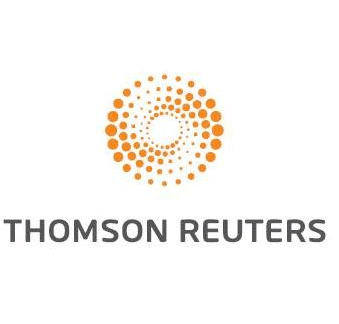The companies struggling with the new MiFID II regulations from the European Securities and Markets Authority (ESMA), set to be implemented on 3 January 2018, have got a new boost from Thomson Reuters to meet the stringent demands - Thomson Reuters has integrated and enhanced its flagship financial desktop Eikon with MiFID II research unbundling requirements. The new features will help brokers to meet the flexible segmentation requirements under MiFID II. It will provide seamless entitlement request and response functionality for the sell-side and Buy-Side through the Research Management Console, and a comprehensive Research Entitlement API for contributor CRM integration. Thomson Reuters has also enhanced its readership reporting systems with better usage tracking to support the buy-side client. The platform will provide clients with the ability to analyse sell-side analyst quality, manage entitlements to external research, gain Market Depth through improved research discovery, and effectively evaluate a firm’s research team. The feature will help clients to overcome the restrictions imposed by MiFID II on free research and its structure based on specific trading or investing decisions. Commenting on the developments, Mahesh Narayan, Head of Portfolio Management and Research, said: "The unbundling requirements are a game-changer with respect to the research segment of the financial services industry, forcing companies to radically alter what are long-standing business practices. Our established research capabilities make Thomson Reuters well-positioned to provide unbiased and powerful solutions that help clients navigate and comply with MiFID II research unbundling requirements. In addition to developing our own products, as an open platform, we are committed to partnering with third-parties that add further value to our Eikon users." Thomson Reuters earlier teamed up with Tradeweb to roll out a new suite of reporting services and help market participants to meet the new MiFID regulations.
The companies struggling with the new MiFID II regulations from the European Securities and Markets Authority (ESMA), set to be implemented on 3 January 2018, have got a new boost from Thomson Reuters to meet the stringent demands - Thomson Reuters has integrated and enhanced its flagship financial desktop Eikon with MiFID II research unbundling requirements. The new features will help brokers to meet the flexible segmentation requirements under MiFID II. It will provide seamless entitlement request and response functionality for the sell-side and Buy-Side Buy-Side The buy-side is comprised of firms in the financial industry that purchase securities and are accompanied by account investment managers, pension funds, and hedge funds.The buy-side is composed of those that buy and invest large sums of securities with the intention of generating a lucrative return or have their funds managed. The Buy-Side ExplainedIn terms of Wall Street, the buy-side includes investment institutions that purchase securities, stocks, or other financial instruments with the aim The buy-side is comprised of firms in the financial industry that purchase securities and are accompanied by account investment managers, pension funds, and hedge funds.The buy-side is composed of those that buy and invest large sums of securities with the intention of generating a lucrative return or have their funds managed. The Buy-Side ExplainedIn terms of Wall Street, the buy-side includes investment institutions that purchase securities, stocks, or other financial instruments with the aim Read this Term through the Research Management Console, and a comprehensive Research Entitlement API for contributor CRM integration. Thomson Reuters has also enhanced its readership reporting systems with better usage tracking to support the buy-side client. The platform will provide clients with the ability to analyse sell-side analyst quality, manage entitlements to external research, gain Market Depth Market Depth Market Depth is a characteristic of a given market and its ability to handle large order sizes without materially affecting the price of the underlying asset or currency pair. Broad-based definitions of market depth characterize it as a function of liquidity and trading volume.In its most simplistic sense, market depth reflects a real-time list displaying the quantity to be sold versus unit price. This in turn is organized by price level and is reflective of real-time market activity. In theory, Market Depth is a characteristic of a given market and its ability to handle large order sizes without materially affecting the price of the underlying asset or currency pair. Broad-based definitions of market depth characterize it as a function of liquidity and trading volume.In its most simplistic sense, market depth reflects a real-time list displaying the quantity to be sold versus unit price. This in turn is organized by price level and is reflective of real-time market activity. In theory, Read this Term through improved research discovery, and effectively evaluate a firm’s research team. The feature will help clients to overcome the restrictions imposed by MiFID II on free research and its structure based on specific trading or investing decisions. Commenting on the developments, Mahesh Narayan, Head of Portfolio Management and Research, said: "The unbundling requirements are a game-changer with respect to the research segment of the financial services industry, forcing companies to radically alter what are long-standing business practices. Our established research capabilities make Thomson Reuters well-positioned to provide unbiased and powerful solutions that help clients navigate and comply with MiFID II research unbundling requirements. In addition to developing our own products, as an open platform, we are committed to partnering with third-parties that add further value to our Eikon users." Thomson Reuters earlier teamed up with Tradeweb to roll out a new suite of reporting services and help market participants to meet the new MiFID regulations.





















